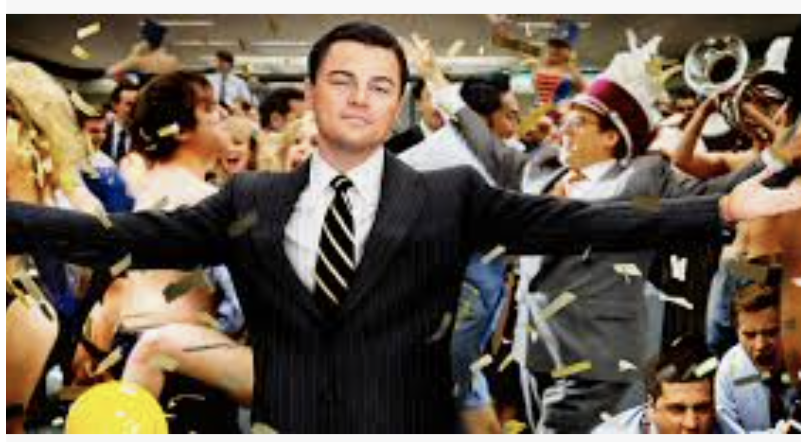So long as they spend a big chunk of it buying Greenwich real estate, and so far, they do seem to be doing that, more power to them, I guess
/The craziest ways Wall Street is spending its record bonuses
Wall Street is handing out its biggest bonuses since 2009. Bigwigs — like Goldman Sachs CEO David Solomon and JPMorgan Chase CEO Jamie Dimon, who got roughly $35 million apiece — are seeing eight-figure sums, while even rookie traders are raking in tens of thousands of dollars, on top of base salaries that have risen well into the six figures. Trading surged during the pandemic, and now it’s time to celebrate.
“We recently had a $10,000 bill [for six people],” said Jesse Schenker, who, with partner Claudia Taglich, owns Oyster Bay, Long Island, fine-dining restaurants Four and 2 Spring. “Everyone ordered the $245 menu, which is 15 courses. They got the black-and-white truffle addition for another $200 [each]. Then, they made friends with the table next to them and started buying wine: a magnum of Krug for $1,800, a Domaine Raveneau Chablis for like $900, a 2005 Domaine Dujac Bonnes-Mares — which I don’t even know how much it was, but probably more than $1,000 — a Jean-Louis Chave Hermitage — which God knows was almost $1,000 again — and finished it off with a $2,500 Spanish Vega Sicilia Unico.
“It always happens around this time of year, especially this year,” Schenker added, noting that he is selling out of $100-per-ounce Kaluga caviar each week. “Bankers are just doing well, and they’re kind of going nuts.”
If they’re not strutting their stuff in a flashy ride, they’re heading out for pricey nights on the town. Philip Zelonky, the 31-year-old founder and co-owner of Chelsea’s Noir NY club, has already seen a new level of lavish spending of late.
In December, a Wall Street client — along with a handful of friends — spent more than $40,000 in a single night, occupying the club’s most exclusive table, right next to the DJ booth. Not only did their bill include an $8,500 3-liter bottle of Dom Pérignon and 20 bottles of Armand De Brignac Ace of Spades Champagne for a cool $21,000, but they also ordered food. They munched on no fewer than 27 ounces of wagyu steak for nearly $1,000, two sushi boats with caviar in nearly every roll, plus four a la carte orders of caviar, priced at $450 for 4 ounces.
“A lot of the crazy spends that we’ve been getting are from the crypto world” and private equity, said Nathan Leong, 32, managing partner and co-owner of Chelsea’s Somewhere Nowhere lounge. [More like From Somewhere to Nowhere, perhaps — ED]
He recently had someone drop $30,000 on New Year’s Eve — ringing in 2022 with orders including a $13,000 3-liter bottle of Dom Pérignon, a $750 bottle of Macallan 12 Year whisky and a $3,100 magnum of Don Julio 1942 tequila. Later this week, he expects customers to pay $60,000 for a rare bottle of Rémy Martin Louis XIII cognac that’s just launching.
“This is probably something for the record books,” said Faisal Malik, a luxury car broker and founder of Status Auto Group — who recently secured a custom-built Bentley for Patriots owner Robert Kraft (a gift from Meek Mill, Jay-Z and Philadelphia 76ers co-owner Michael Rubin). “It doesn’t make any sense how unemployment is through the roof and everyone just has money somehow. I have never seen an uptick in the higher-end spectrum of things like this with $200,000 cars being bought like they’re Jell-O.”
This is the kind of wild, senseless spending I used to see when chasing penny stock crooks; Long Island and New Jersey boys, mostly, who’d never had money growing up, and didn’t know what to do with it when they suddenly got it, except to rent houses in the Hamptons and snort coke with their big-boobed dates while driving out there in their Geländewagens.
I’m sure it’s a different crowd now, of course — after all, a lot of these people are Harvard graduates —but it’s certainly a different world from the last century. My father graduated from Columbia’s business school in 1929, and like most of his Wall Street contemporaries, went through the Depression, WWII, and the decades-long bear market of the 50s and 60s. They made money, though not on the scale being churned out today, but would have been mortified to be seen spending it like a drunken — or coked-up — sailor.
But as I said, that was then, this is now.

